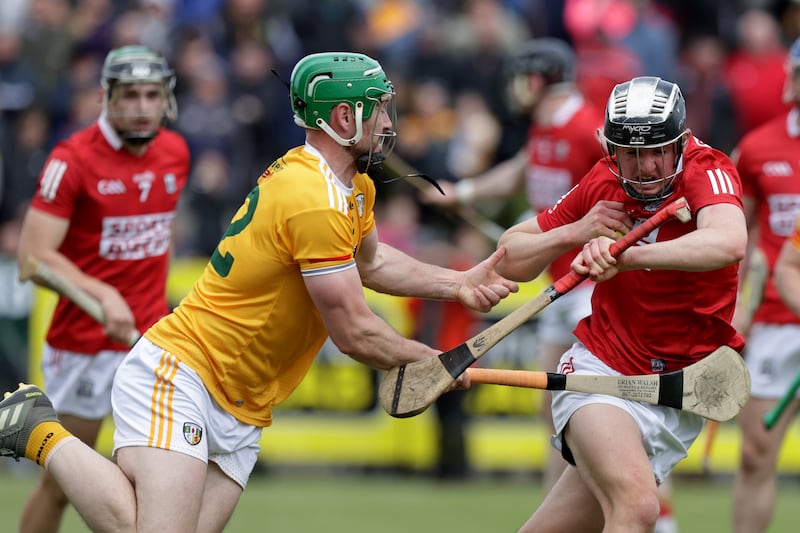More than 30 years ago the late Colm Keane made a haunting radio documentary for RTÉ called A Belfast Game. It told the story of the Ardoyne Kickhams U-16 footballers, winners of the South Antrim championship in 1969, and how The Troubles invaded their lives. The final was played seven days after James Callaghan, the British home secretary, had moved troops into the North to confront the growing unrest, and on their way to Casement Park the team bus passed burnt out cars, the smouldering remains of the previous night’s rioting.
It was a still point in lives that would be dragged in different directions. Two members of that panel of 24 players lost their lives in The Troubles; two of them lost fathers; two of them had brothers who were shot. Ten of them emigrated, only a couple of whom returned. Among their ranks, too, were a couple of Protestant boys, which would have been unusual then, and unimaginable only a short time later.
Taking a snapshot of Northern Ireland in The Troubles through the lens of sport was a recurring device, across all media. A few years after Colm Keane’s documentary, Fergal Keane of the BBC made The Boys of Summer for television, telling the story of a football team from Holy Cross primary school, in Ardoyne, and set just a year earlier in 1968.
When Andrew Lloyd Webber and Ben Elton had the chutzpah to turn The Troubles into a dismal West End musical, The Beautiful Game was reportedly inspired by both of those documentaries, with at least a couple of the characters transported from The Boys of Summer, and fitted with a costume for the stage.
Ken Early on World Cup draw: Ireland face task to overcome Hungary, their football opposites
The top 25 women’s sporting moments of the year: 25-6 revealed with Mona McSharry, Rachael Blackmore and relay team featuring
Is there anything good about the 2034 World Cup going to Saudi Arabia?
World Cup 2026 draw: Team-by-team guide to Ireland’s opponents
In telling a story from The Troubles, sport offered a universal language. In a divided society, it was an emblem of your tribe, just as visceral as the songs, and the flags, and the faith and the politics. The short hand was simple to decipher.
So, what does it mean now? Does it mean all the same things it once did? Or have the borders softened?
[ Northern Ireland census: Another psychological blow for unionismOpens in new window ]
[ More Catholics than Protestants in Northern Ireland for first time, census findsOpens in new window ]
When the results of the Northern Ireland census were released on Thursday, one of the outcomes that generated the greatest attention was how people described their nationality. On the census form were eight options, descending from the vanilla responses (British only 31.86 per cent; Irish only 29.13 per cent) to a variety of minority identities (British, Irish and Northern Irish only 1.47 per cent; Irish and Northern Irish only 1.76 per cent).
In an alternative census, how would those numbers have translated into sporting preferences? Would “GAA only” or “Rugby only” or “Soccer only” have dominated the numbers, like they would have done, say, 30 years ago, or would more of the second and third preferences have been cross-cultural?
In 2015 the Northern Ireland Executive commissioned the University of Ulster to produce a report, Social Exclusion and Sport in Northern Ireland. Some of the outcomes were heartening: 86 per cent of the people surveyed said they believed sport was a good way to break down barriers between Protestants and Catholics, and around the same figure believed that sport was more “open and inclusive” than it had been a decade earlier; two-thirds of respondents said they believed that sports-based peace-building projects were “effective.”

In the next breath, 57 per cent of the people surveyed believed there was “nothing wrong” with different sports for Protestants and Catholics. Only 1 per cent of the Protestants surveyed said they had watched “a lot” of Gaelic football in the previous year, but nearly two in five said they would go to a game in Casement Park, if they were given a ticket. Even though the free ticket was a hypothetical offer, it represented a degree of curiosity, and minds that were at least ajar.
Searching for what those numbers might mean in the day-to-day life of the mainstream sports requires some rooting around. Ten years ago, for example, when Ulster reached the final of the Heineken Cup against Leinster, they profiled their support base and established that nearly a quarter of their regulars at Ravenhill were from a nationalist background. It is hard imagine that figure has fallen since.
In recent years, Windsor Park has become a more comfortable environment for Catholics who wish to support Northern Ireland: there are more green and white flags and fewer union jacks, and the song-list in the stands is not as inflammatory as it once was. Are there more football fans who support both Northern Ireland and the Republic now? That would be an interesting question for the alternative census.
The GAA are attempting to reach out, too. One terrific initiative is the Cúchulainn Cup, which this year included 14 schools in five towns: five Catholic schools, five Protestant schools, and four schools that cater for children of all religions. In each town a multi-denominational team is picked, mostly with beginners, or kids who used to play but haven’t done so for years. This year’s winners were Limavady, with a team picked from two Protestant schools and one Catholic school.
Targeting children as carriers of change is the mission of Peaceplayers, an international organisation, which has been active in Northern Ireland since the early 2000s. “It is based on a very simple premise,” said Gareth Harper, managing director of their Belfast office. “Children who play together can learn to live together.”
Their work is primarily conducted in schools that are partnered for the purpose of forming integrated basketball teams, a neutral sport not associated with one tradition or the other. One of their initiatives is the Belfast Inter-Face Games where they work with children near the so-called peace lines - segregation walls between loyalist and republican areas that were erected during The Troubles.
One of their greatest triumphs was in Ardoyne. In the early 2000s, Holy Cross, a Catholic primary school in a Protestant area, was picketed by local parents who claimed that their homes had been attacked by republicans. The protests turned violent and eventually riot police accompanied the Holy Cross pupils and their parents on their daily walk to school.
Peaceplayers worked with Holy Cross and a nearby Protestant school in Wheatfield to build an integrated basketball team and, from that, a bridge. Having had the experience of playing basketball together, they got involved in a Game of Three Halves (a joint Ulster GAA, Ulster Rugby and IFA project) where Protestant kids from Wheatfield and Glenbryn played Gaelic football and Catholic kids from Holy Cross played rugby.
It is the same neighbourhood where Colm Keane and Fergal Keane told their stories. But it is a different story now.






